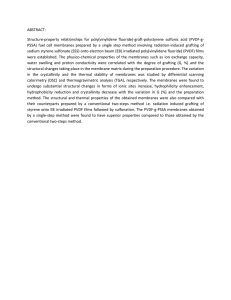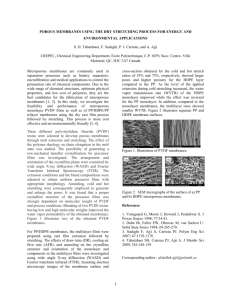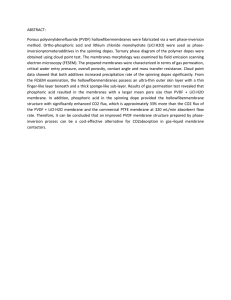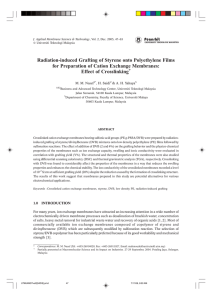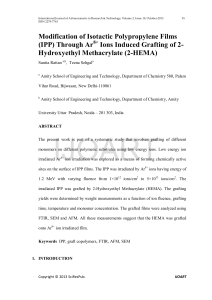ABSTRACT: Proton-exchange membranes containing poly(styrene sulfonic ...
advertisement
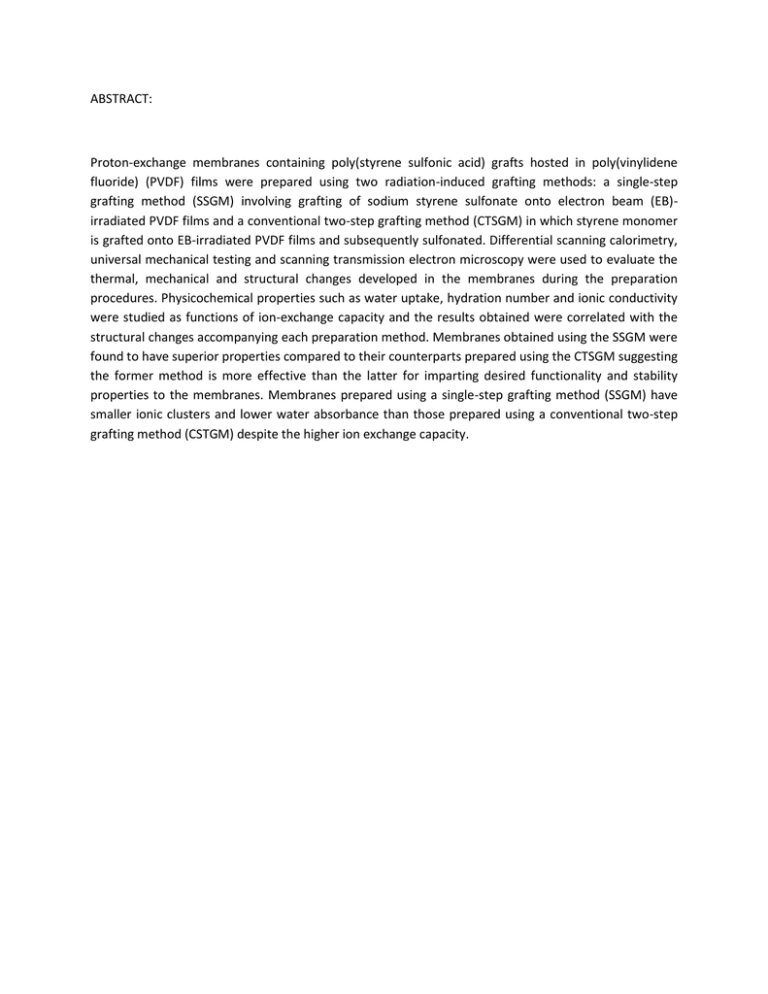
ABSTRACT: Proton-exchange membranes containing poly(styrene sulfonic acid) grafts hosted in poly(vinylidene fluoride) (PVDF) films were prepared using two radiation-induced grafting methods: a single-step grafting method (SSGM) involving grafting of sodium styrene sulfonate onto electron beam (EB)irradiated PVDF films and a conventional two-step grafting method (CTSGM) in which styrene monomer is grafted onto EB-irradiated PVDF films and subsequently sulfonated. Differential scanning calorimetry, universal mechanical testing and scanning transmission electron microscopy were used to evaluate the thermal, mechanical and structural changes developed in the membranes during the preparation procedures. Physicochemical properties such as water uptake, hydration number and ionic conductivity were studied as functions of ion-exchange capacity and the results obtained were correlated with the structural changes accompanying each preparation method. Membranes obtained using the SSGM were found to have superior properties compared to their counterparts prepared using the CTSGM suggesting the former method is more effective than the latter for imparting desired functionality and stability properties to the membranes. Membranes prepared using a single-step grafting method (SSGM) have smaller ionic clusters and lower water absorbance than those prepared using a conventional two-step grafting method (CSTGM) despite the higher ion exchange capacity.
